Every problem is a solution in disguise or it would not be a problem in the first place. – Paul Hawken
Setting an “unreasonable goal” of reversing the Ecological Crisis as a whole – because we “don’t know how to do this” – allows us to imagine and invent a process for reversing the Ecological Crisis as a whole …
… and allowing the biosphere to meet the physical needs of all its living beings, including its human beings, as a whole …
In the words of Paul Hawken:
Every problem is a solution in disguise, or it would not be a problem in the first place.
Applying Paul Hawken’s thinking, the Ecological Crisis as a whole is a solution in disguise.
In other words, a solution – in the form of a process for reversing the Ecological Crisis – is to be found within the Ecological Crisis itself.
When one understands that a process for reversing the Ecological Crisis is to be found within the Ecological Crisis, imagining & inventing such a process requires looking within the Ecological Crisis to understand what’s creating the Ecological Crisis.
When one looks within the Ecological Crisis, one understands that people everywhere making decisions for meeting human physical needs are creating the Ecological Crisis.
People everywhere making decisions to extract physical things from the biosphere – things like forests, fresh water, wildlife, soils & minerals (which may be called “things-we-extract”) – for meeting human physical needs are creating global-scale ecological crises of fresh water depletion, deforestation and species extinctions.
People everywhere making decisions to use physical things for meeting their human physical needs – things like energy, water, materials & chemicals, food & fiber and structures & manufactures (which may be called “things-we-use”) that put physical pollution into the biosphere – are creating global-scale ecological crises of climate change, synthetic pollutants, ozone depletion, aerosol pollutants, ocean acidification and nitrogen & phosphorus pollutants.
Human decision-making for meeting human physical needs (which may be called “the Human Enterprise”[1]) may be depicted as …
… the sum of people everywhere deciding to extract physical things (in turquoise) from the biosphere (in deep green) …
… things like forests, fresh water, wildlife, soils and minerals -- that may be called the “things-we-extract” …
… plus all the physical flows of all those things-we-extract (in orange) – things like forests, fresh water, wildlife, soils and minerals -- from the biosphere (in deep green) and into the Human Enterprise …
… plus people everywhere deciding to use all those things-we-extract (in turquoise) -- in the forms of energy, water, materials & chemicals, food & fiber and manufactures & structures …
… things like energy, water, materials & chemicals, food & fiber and manufactures & structures that may be called the “things-we-use” …
… plus all the physical flows of all those things-we-use (in chartreuse) – things like energy, water, materials & chemicals, food & fiber and manufactures & structures -- within the Human Enterprise for meeting human physical needs …
... plus all the physical flows of pollution from all those things-we-use (in orange) from the Human Enterprise back into the biosphere (in deep green) …
This simple “map” of the Human Enterprise depicts:
people everywhere making decisions for meeting human physical needs (in turquoise), plus
all the physical things-we-extract flows (in orange), physical things-we-use flows (in chartreuse) and physical pollution flows (in orange) created by people everywhere making decisions for meeting human physical needs …
The simple map of the Human Enterprise allows one to visualize that the exponential growth of the Human Enterprise (in yellow) …
… has reached a point where the exponential damage to the biosphere (in deep green) from the exponentially growing things-we-extract flows and pollution flows of the Human Enterprise (in orange) is outstripping the biosphere’s capacity to regenerate itself …
The exponential damage to the biosphere as a whole from the things-we-extract flows of the Human Enterprise is showing up (in blue-gray) as:
eco-crises of freshwater depletion
eco-crises of deforestation and expanding deserts, and
eco-crises of species extinctions and biodiversity loss …
The exponential damage to the biosphere as a whole from the pollution flows of the Human Enterprise is showing up (in orange) as:
eco-crises of global warming and climate change
eco-crises of synthetic pollutants such as herbicides, pesticides and microplastics
eco-crises of ozone layer depletion
eco-crises of aerosol pollutants such as dust, smoke and sulfates
eco-crises of ocean acidification, and
eco-crises of phosphorus and nitrogen pollutants in rivers and coastal seas …
When one thinks of the Ecological Crisis as “a solution in disguise,” one might visualize that …
… people everywhere making decisions for meeting human physical needs are creating physical things-we-extract flows, physical things-we-use flows & physical pollution flows …
… and the exponentially growing things-we-extract flows & pollution flows are physically damaging the biosphere and creating the Ecological Crisis as a whole …
What do you think? Does this make sense to you?
To receive new posts and nourish my work, please consider becoming a free or paid subscriber to my Substack channel:
If you like today’s post, please share it far and wide:
Your questions and comments keep me going.
Thank you for reading Solving the Eco-crises.
Peace and Aloha!
Erik
P.S. I cross-posted this article on Medium for greater reach.
[1] Biologist Paul Ehrlich used the expression -- “the human enterprise” -- to capture the entirety of human activities in relation to the biosphere: “To rescue the human enterprise in the long run requires strong action in the short run directed toward saving biodiversity and bringing the human enterprise within sustainable limits.”





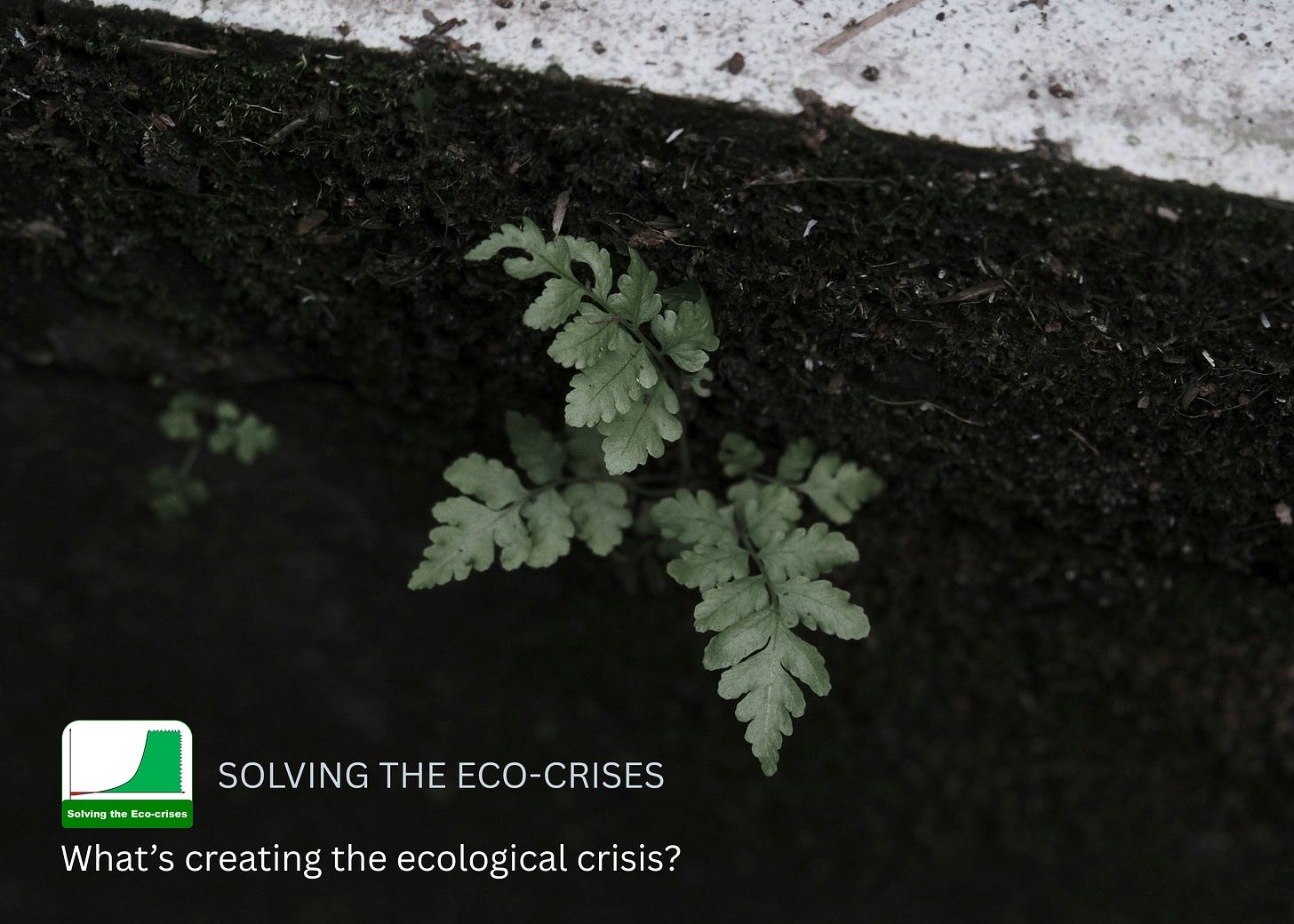
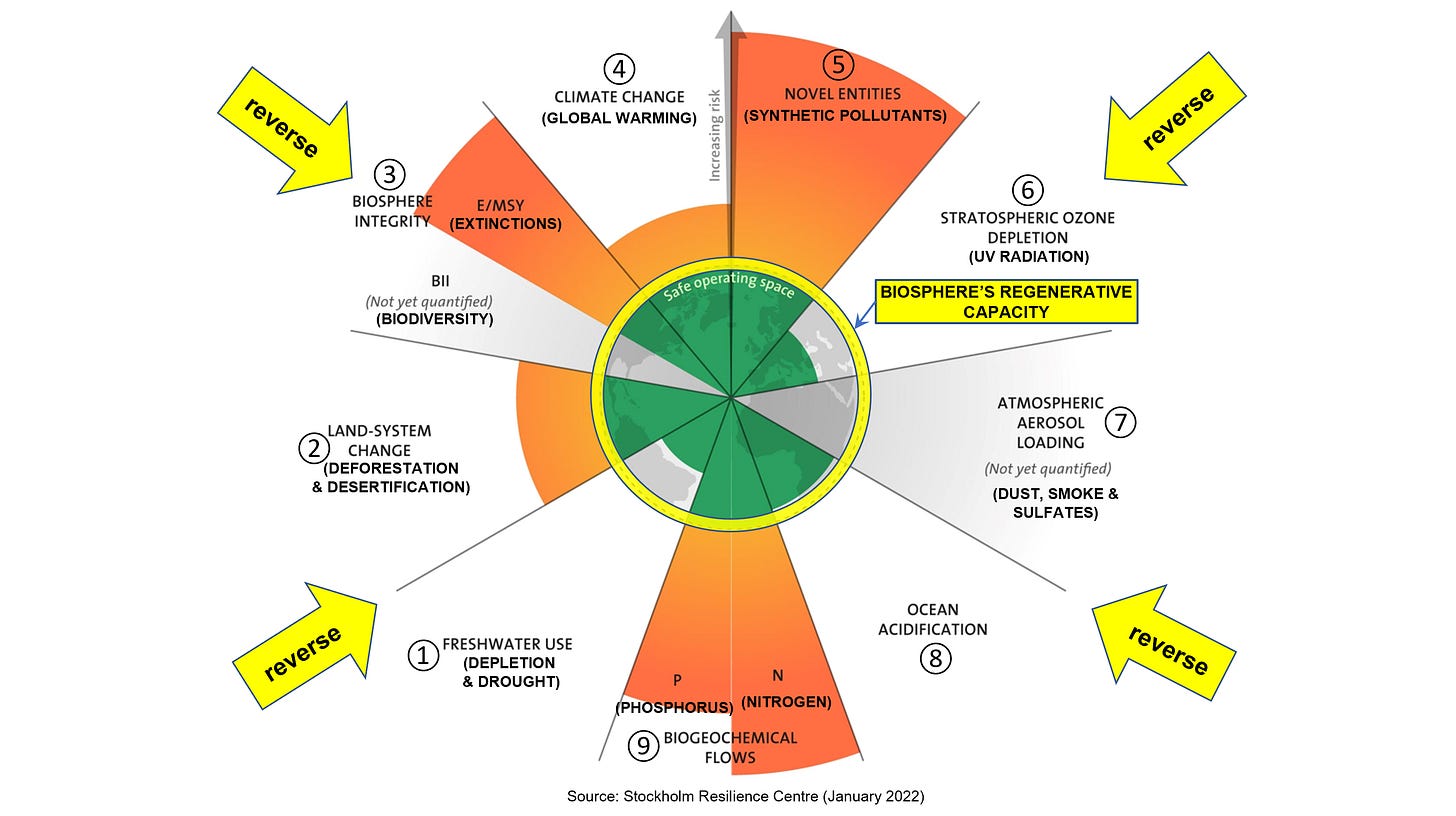
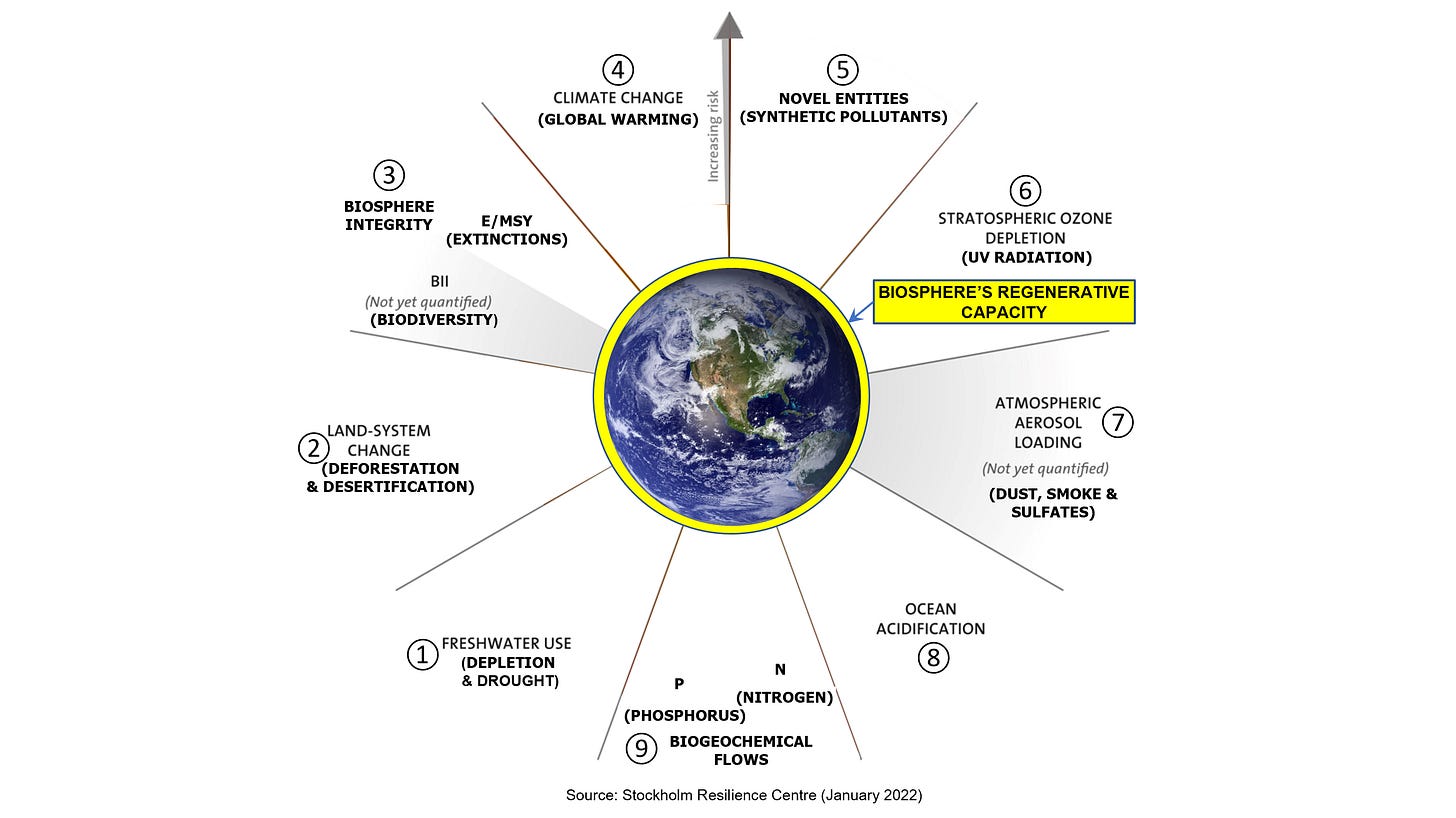
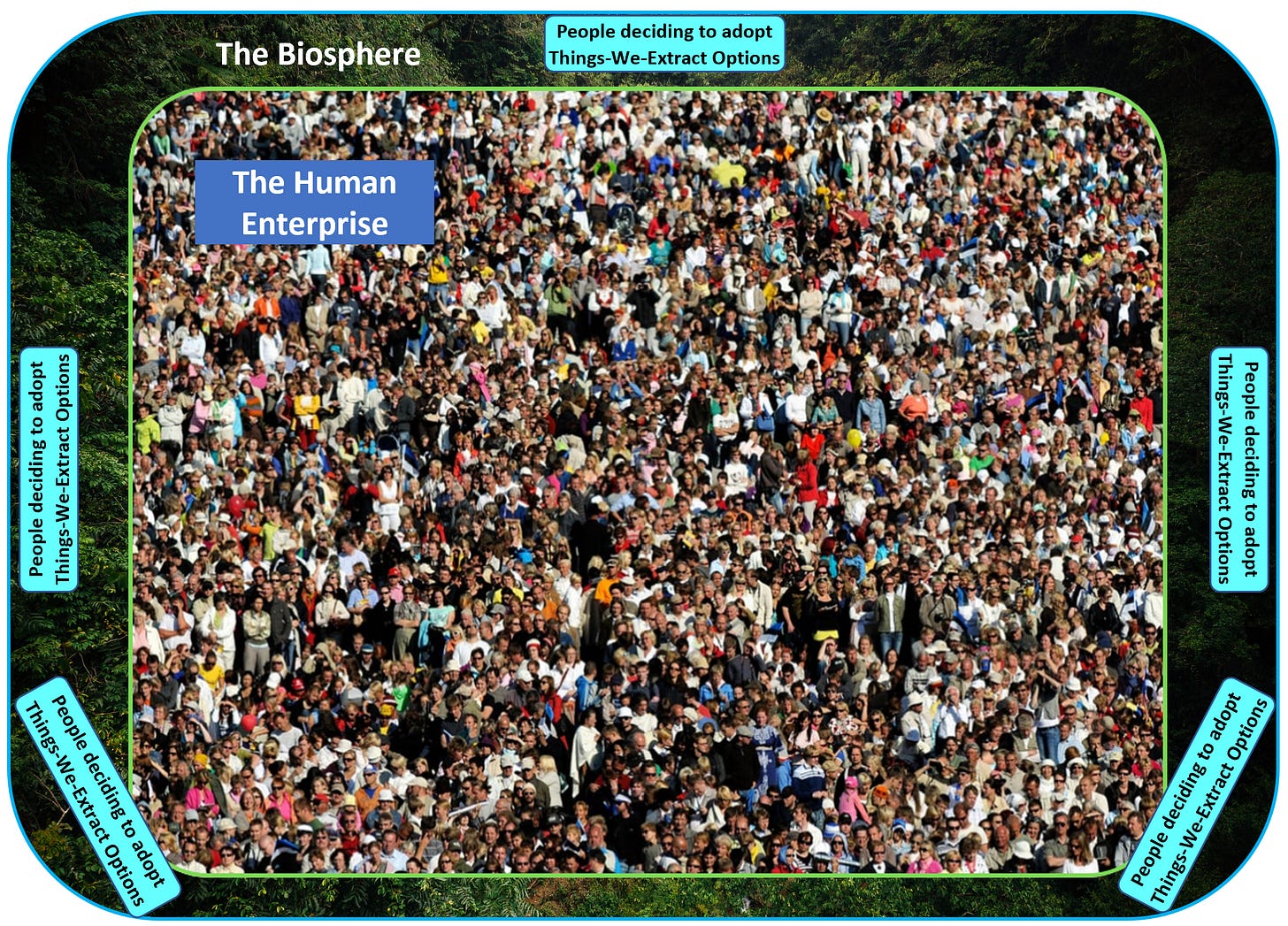
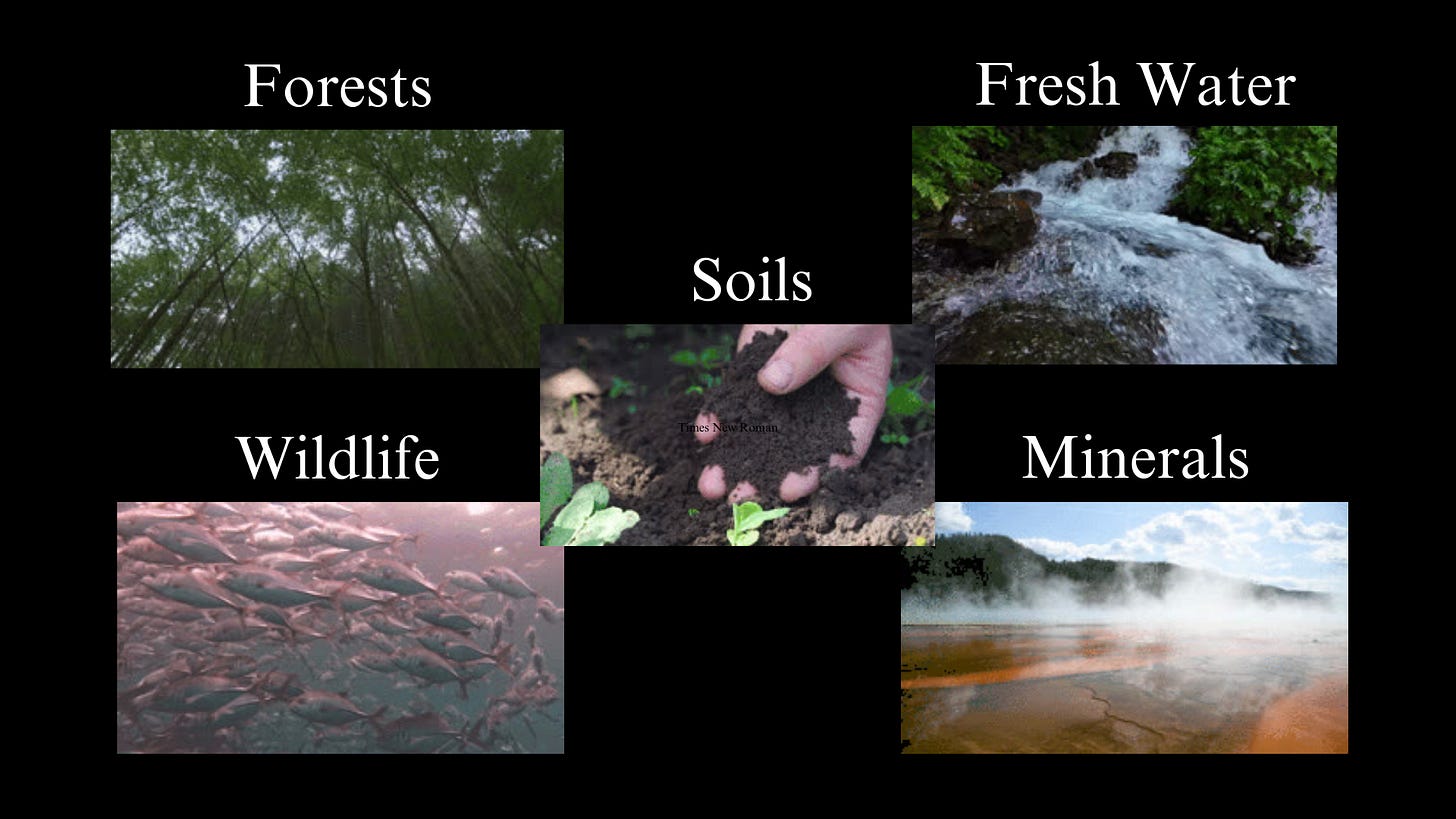
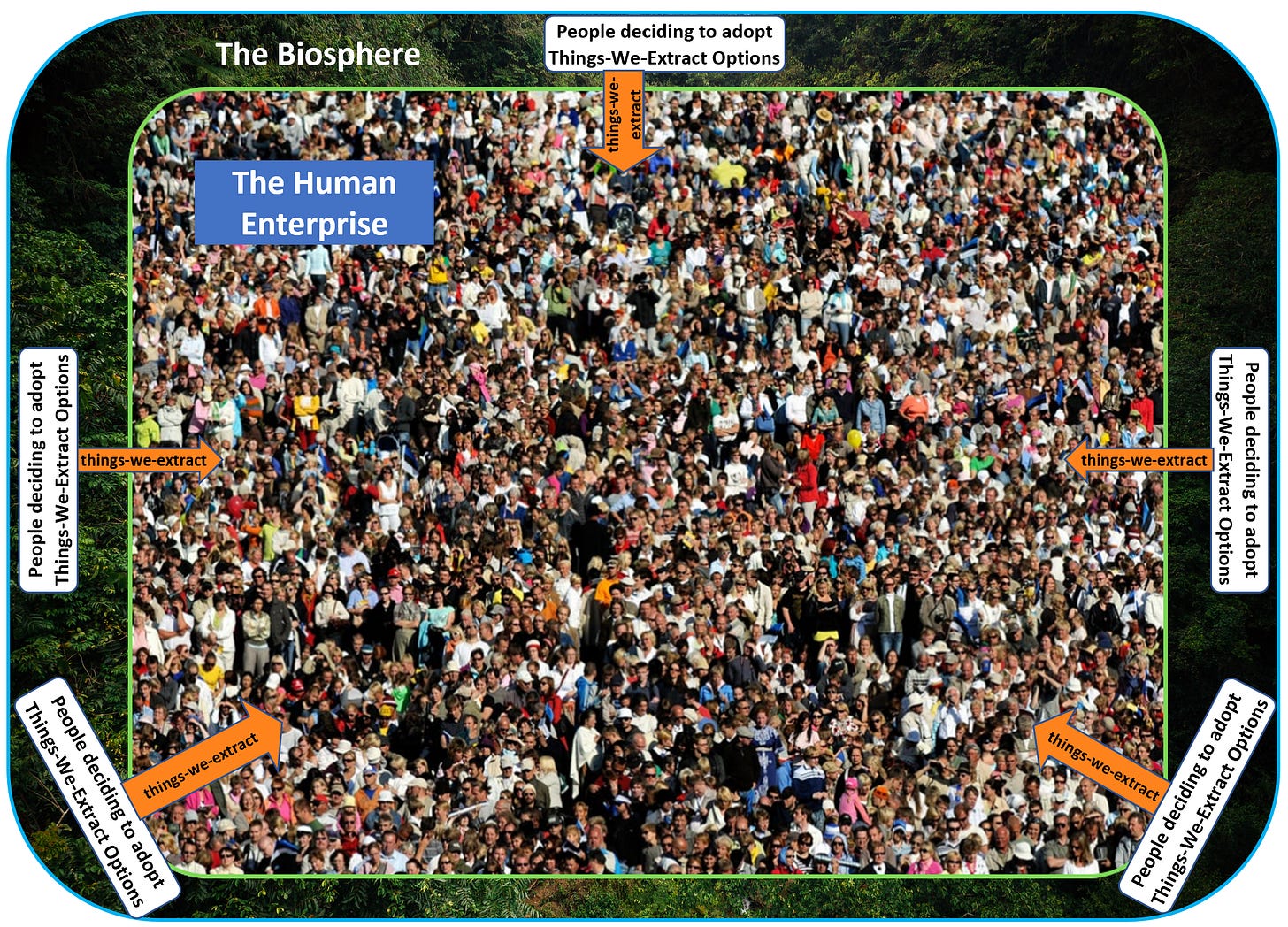
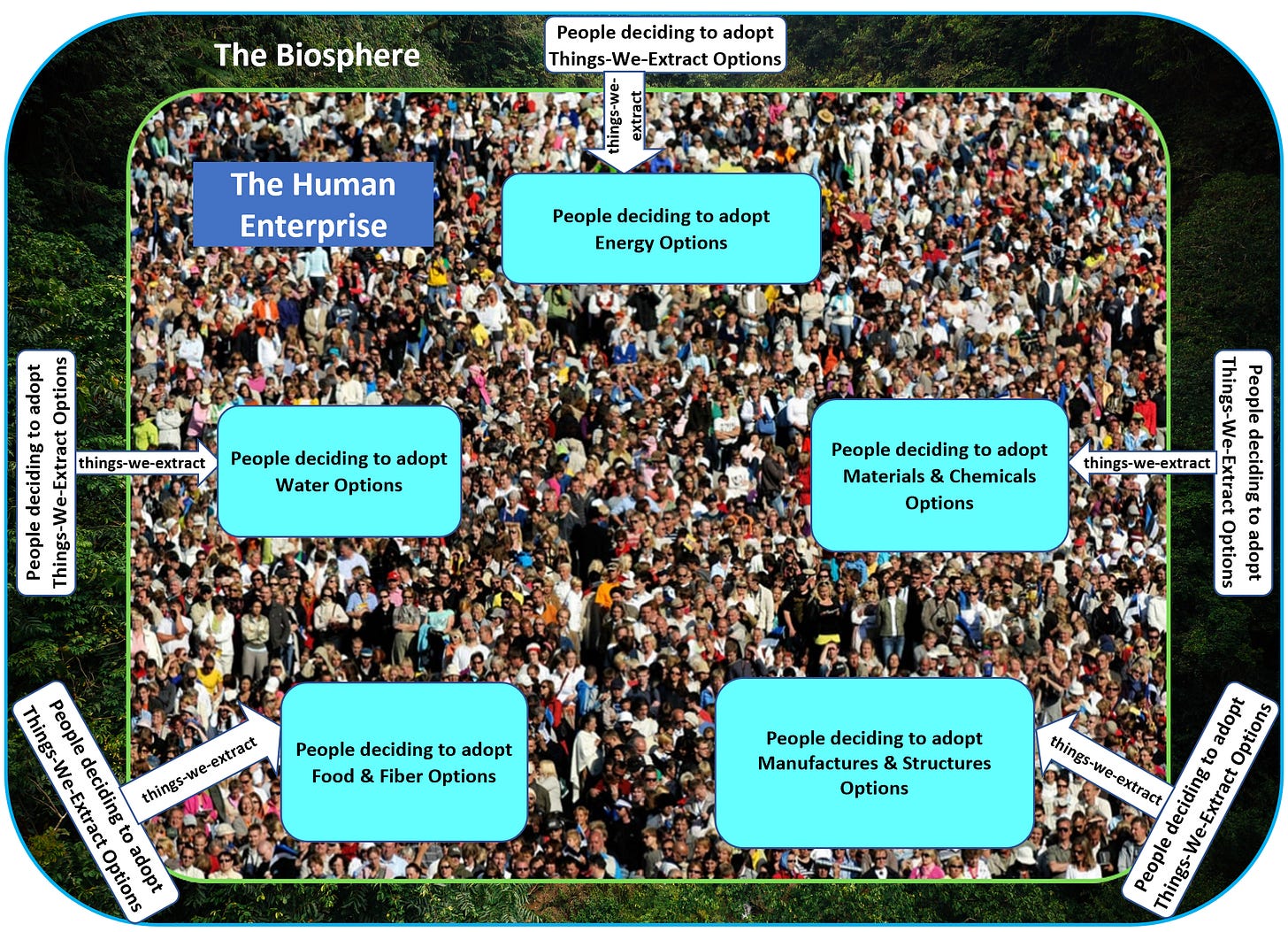
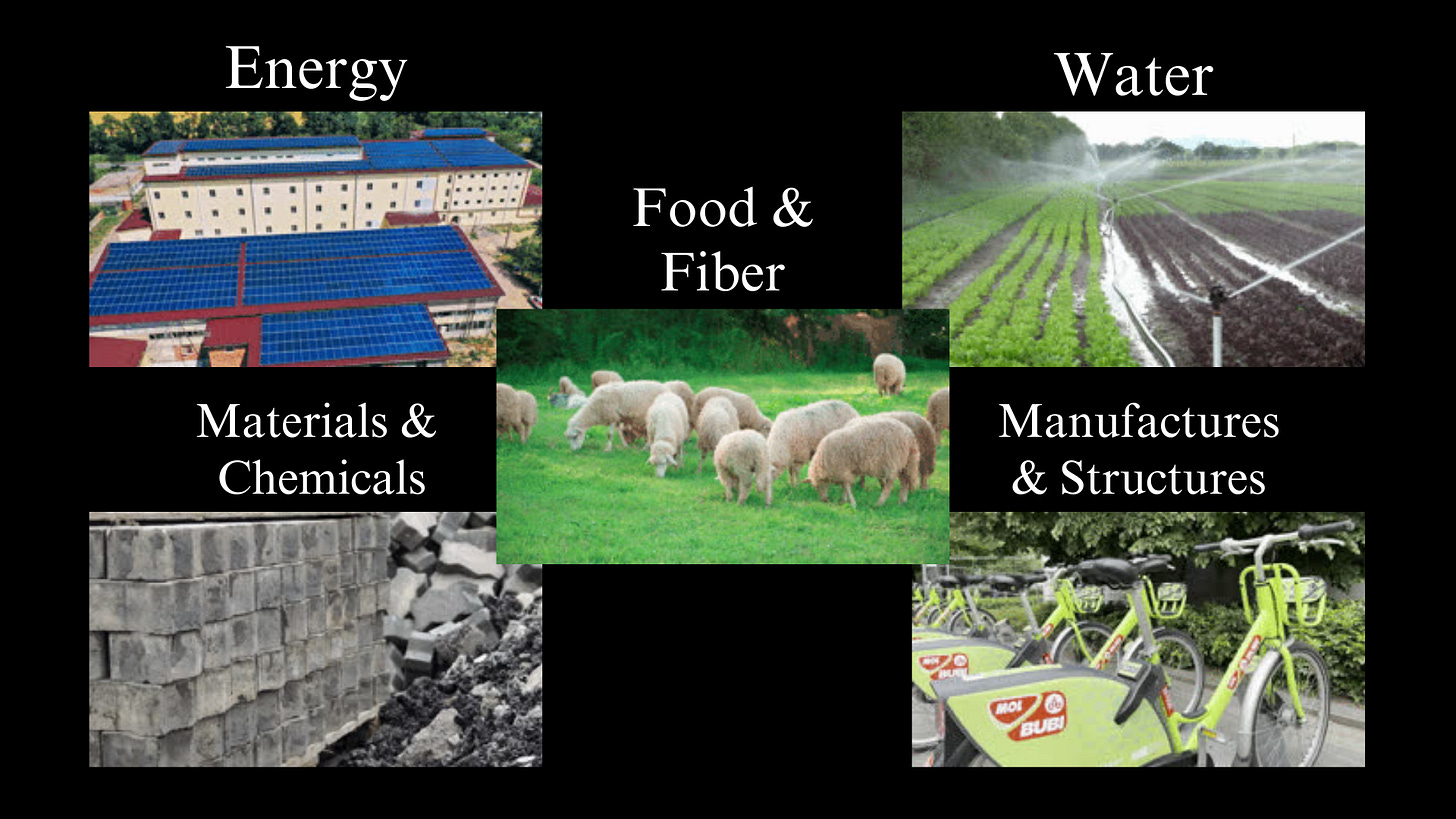
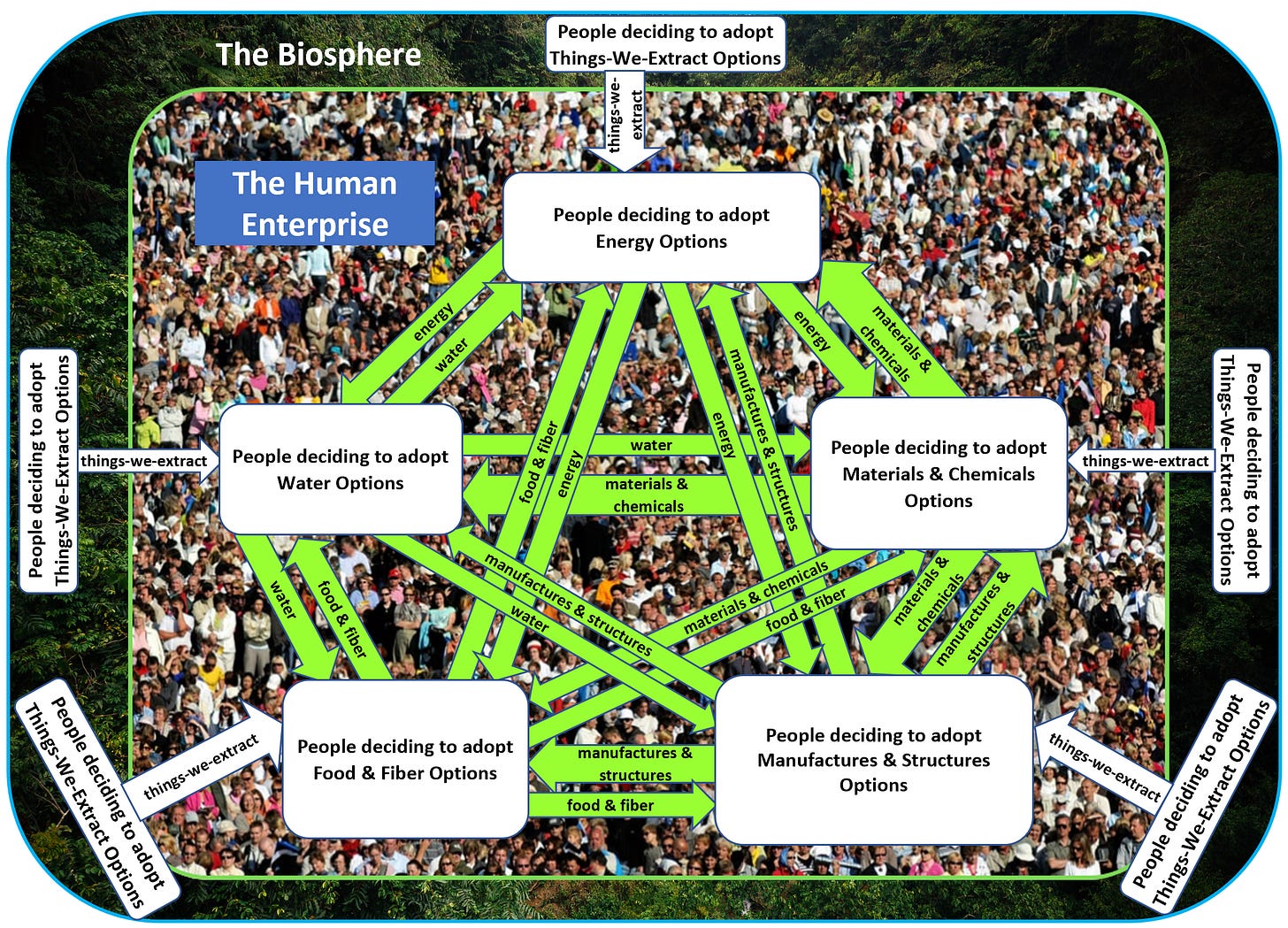


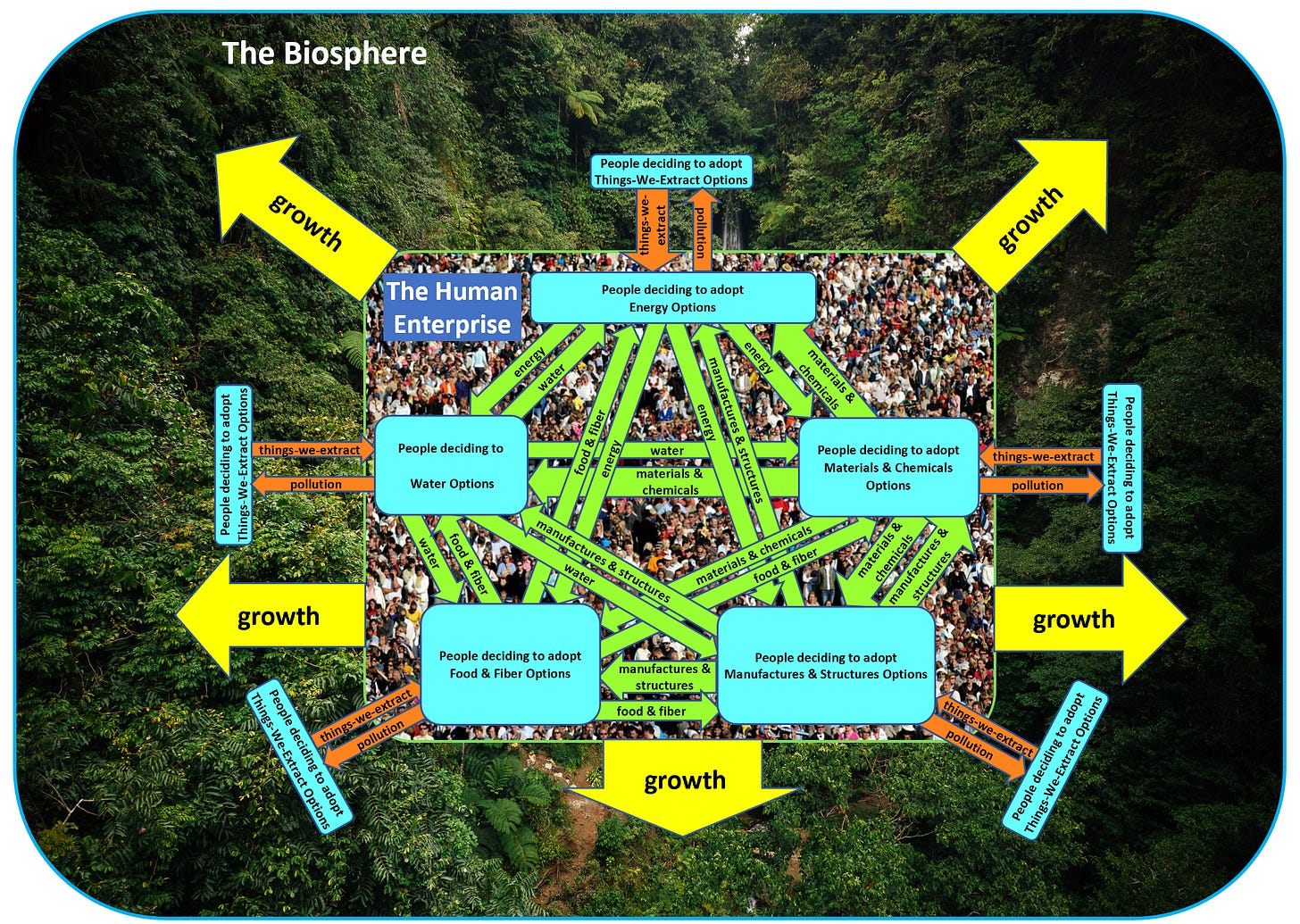
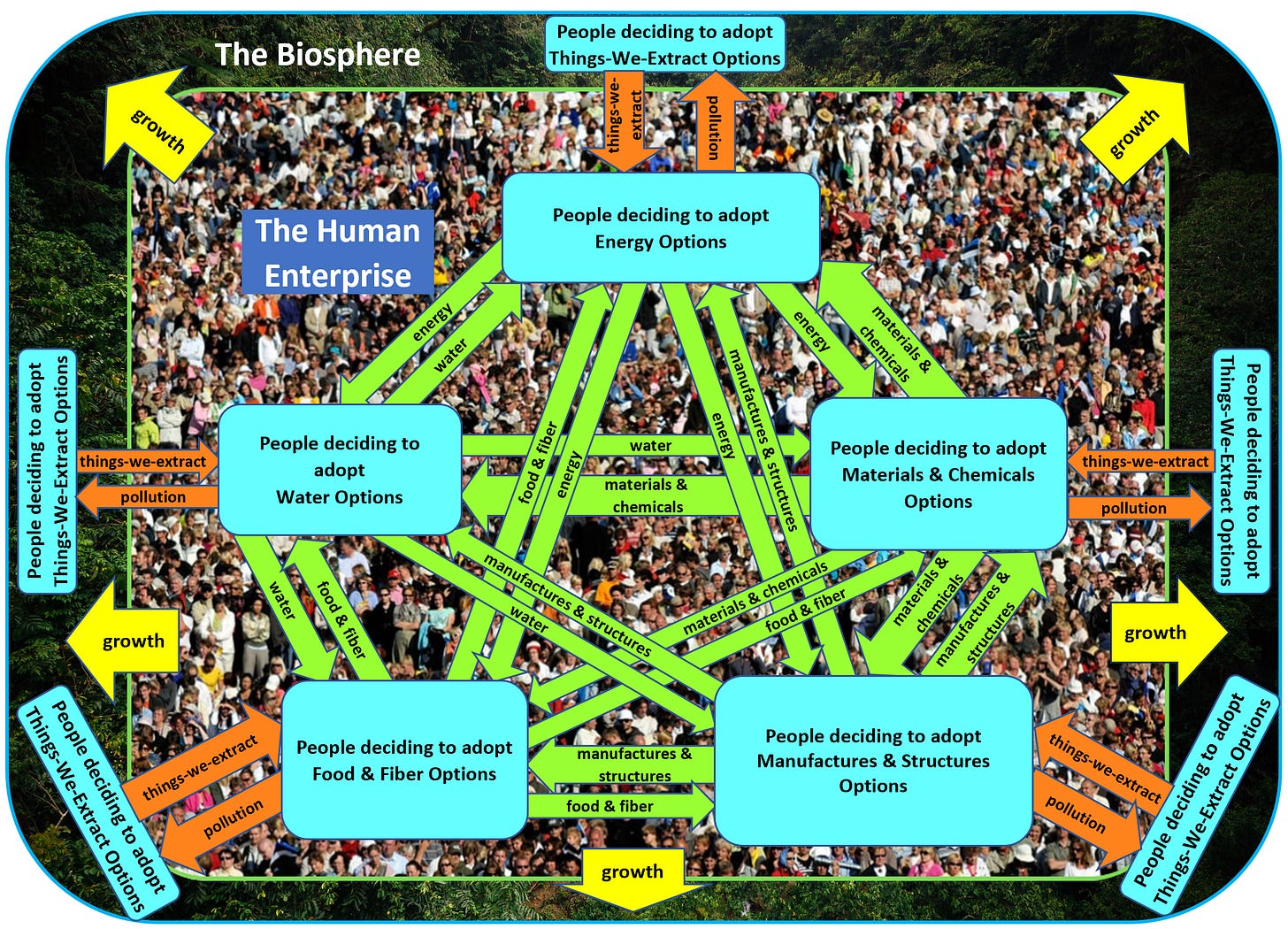
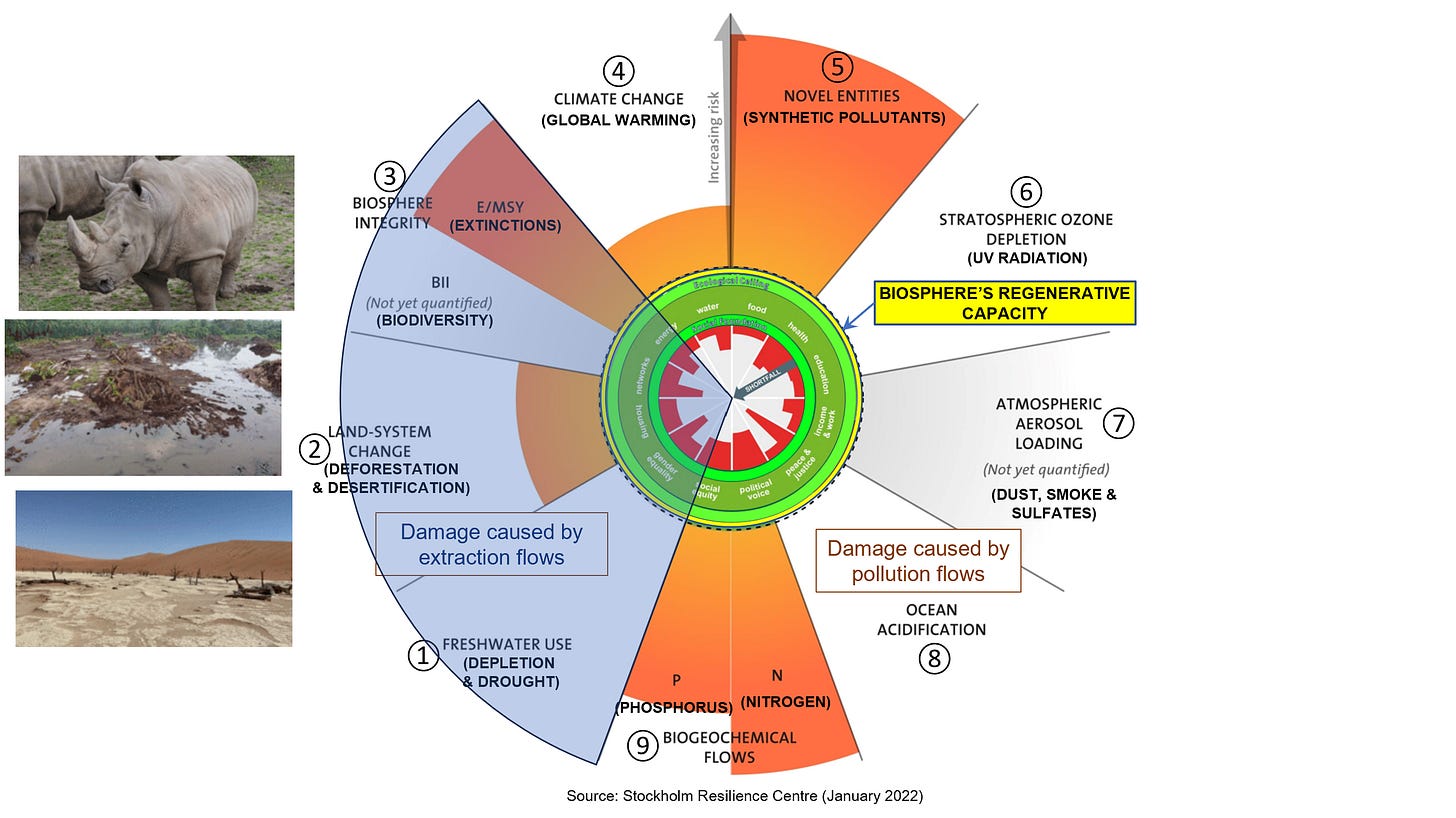
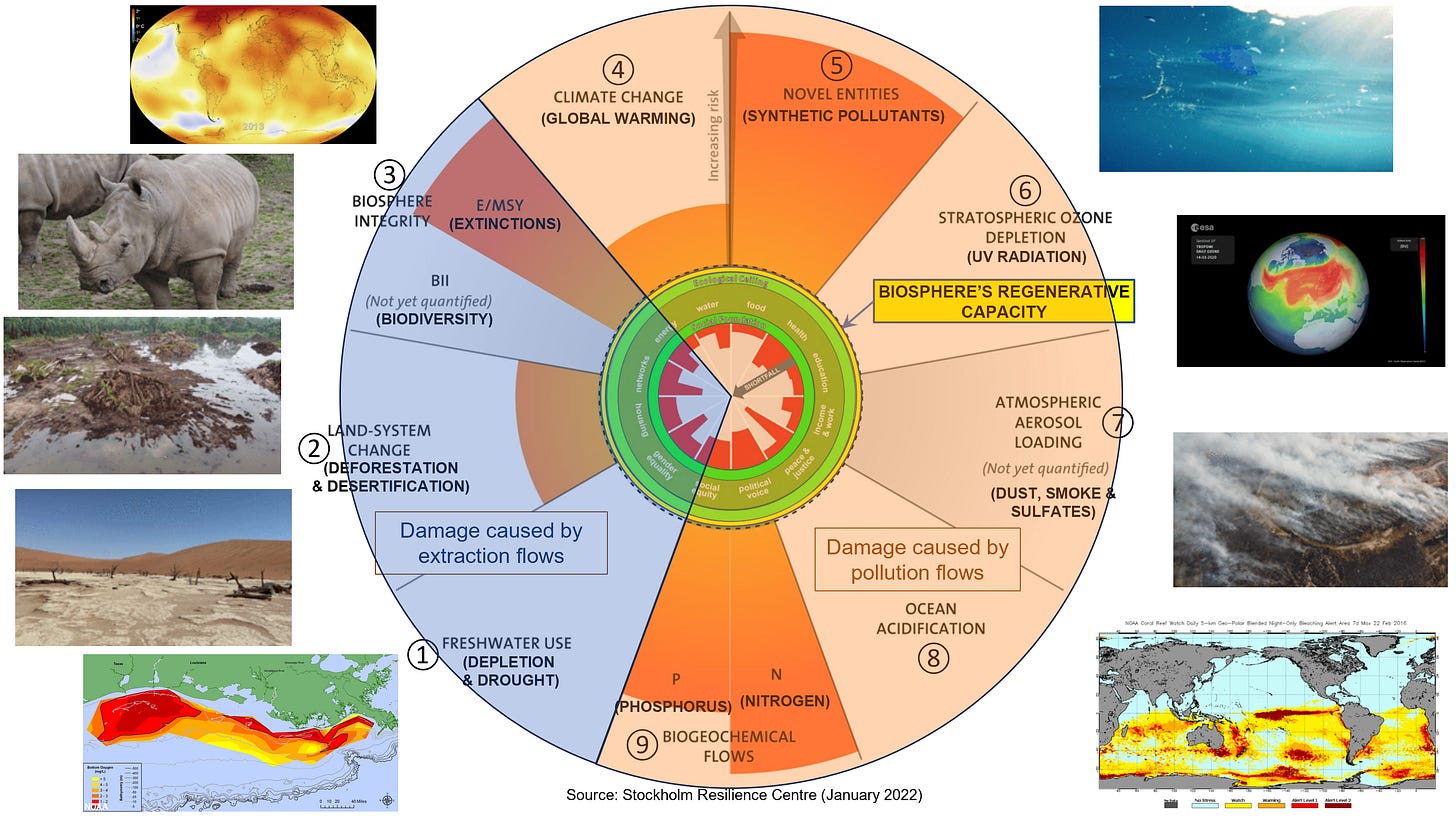
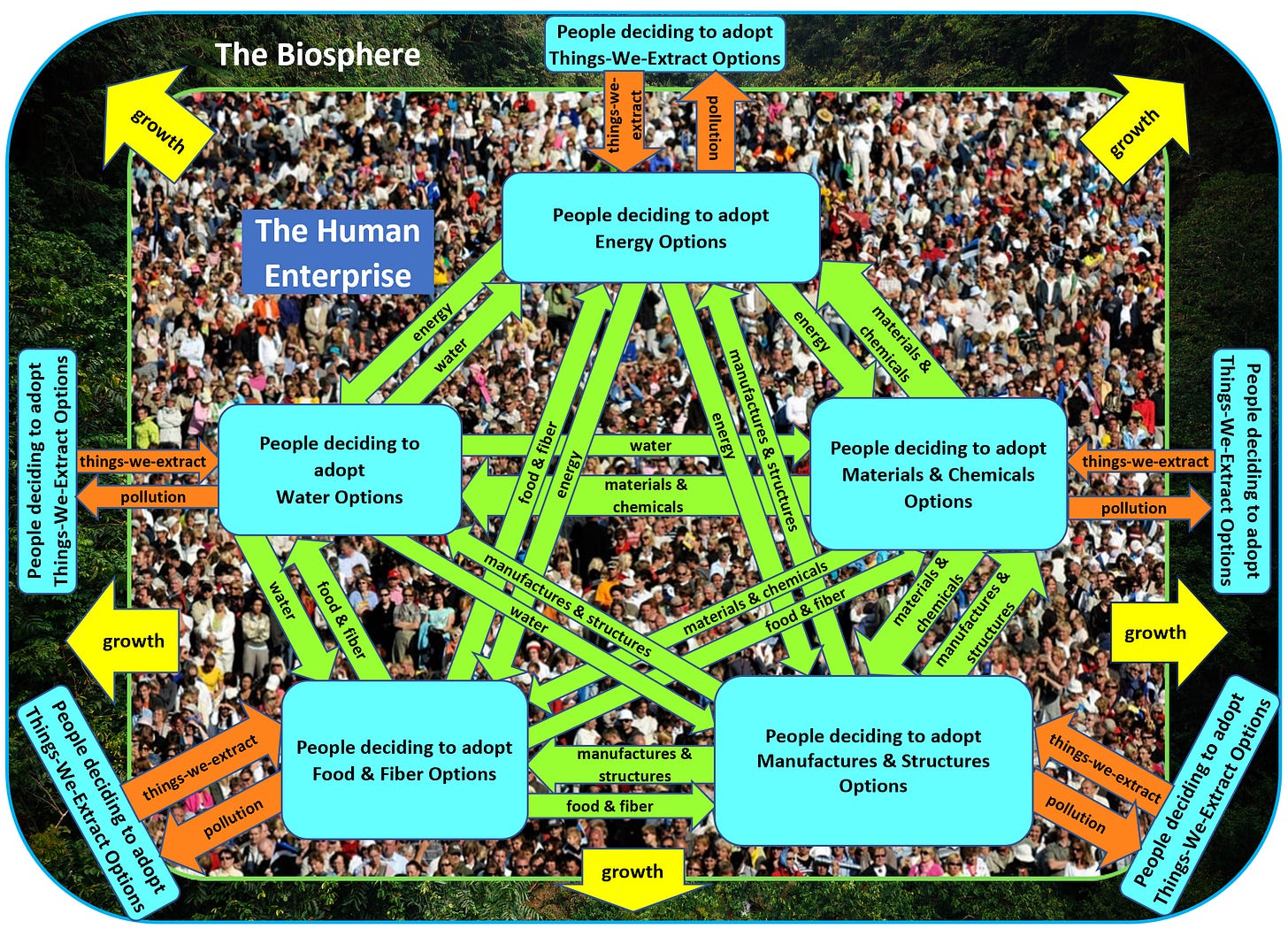
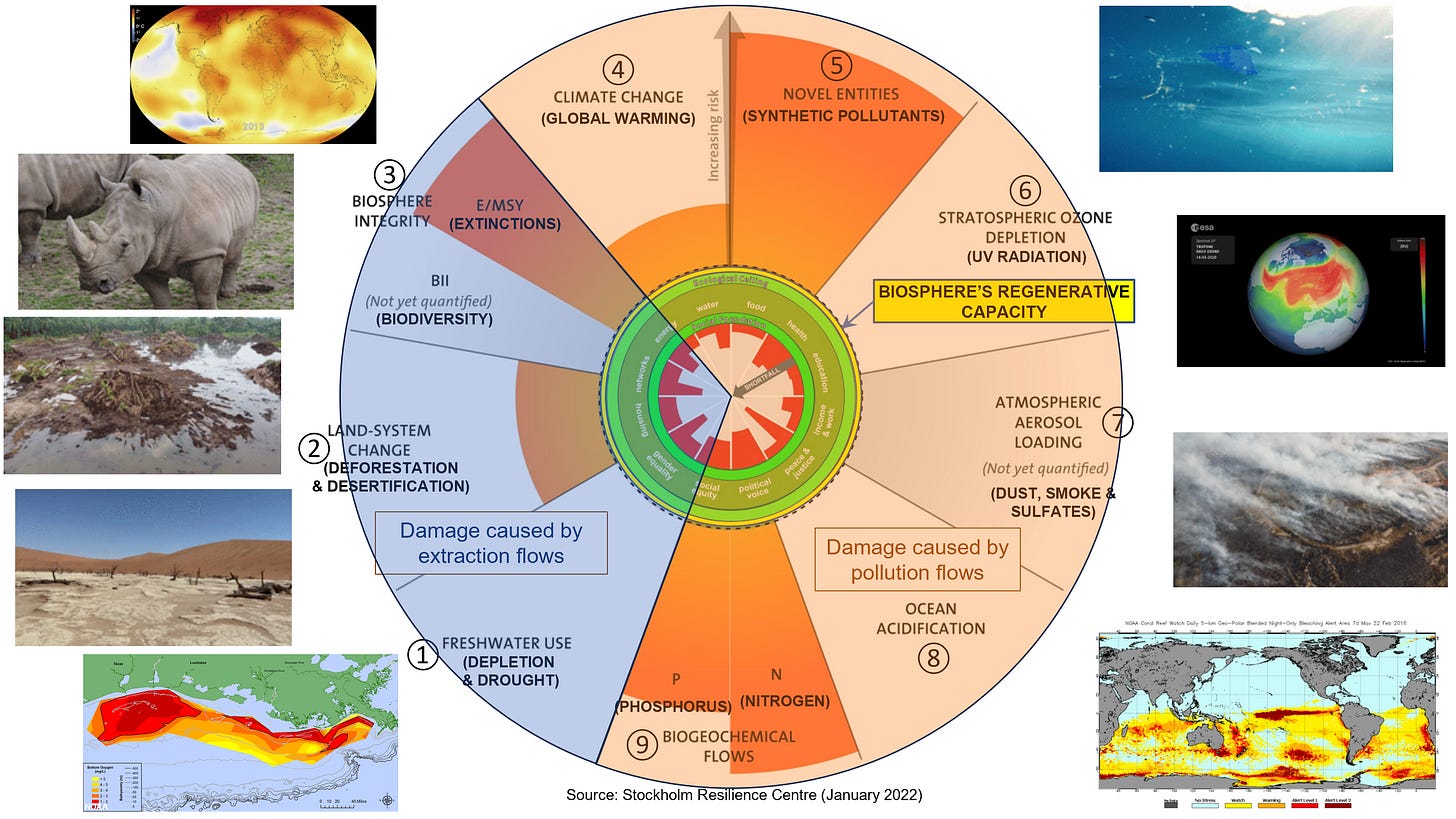
This gives me genuine hope that by redesigning those decision points, we can indeed reverse course. Thank you for this clear, actionable roadmap at a time when most environmental writing feels either doom-laden or naively optimistic.